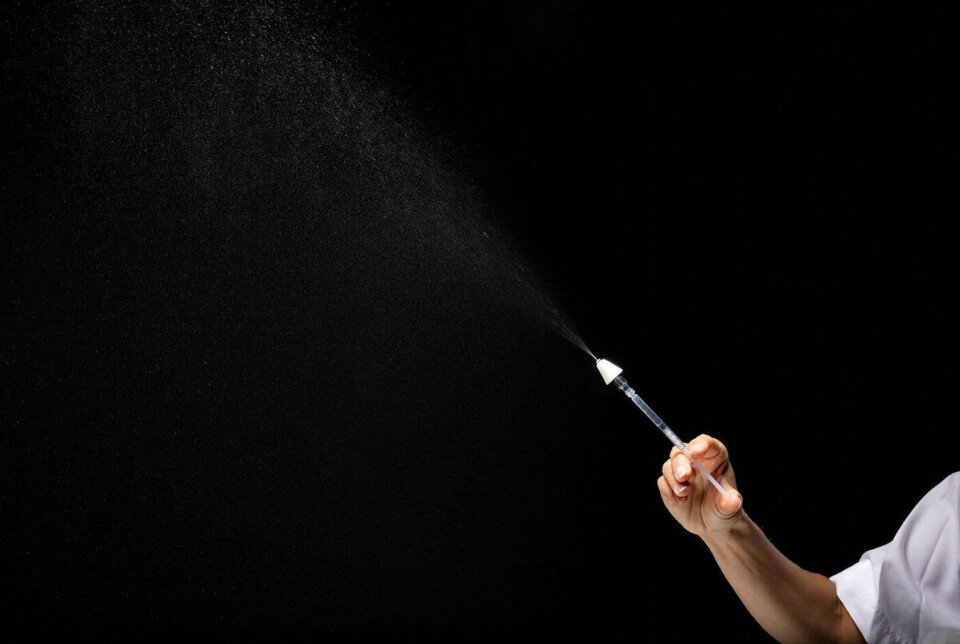THIS CONTENT IS BROUGHT TO YOU BY NTNU Norwegian University of Science and Technology - read more

Children in severe pain do not receive enough help
Nasal spray painkillers could be a solution for children who are scared of needles. National guidelines in Norway may be changed as a result.
You have probably been there yourself.
In the emergency room, on the ski slope, or at the ice rink, with a child who is in great pain. Their wrist is swollen and broken. Tears are flowing, and everything hurts.
On top of all that, your child is frightened of needles and refuses to be injected with painkillers.
It is difficult for the child, it is difficult for the parents, and it can also be difficult for the health care providers.
In fact, it turns out that one in three children in emergency rooms complain about being in pain.
Children are tough
“Children are tougher than adults and can withstand most things. If a child has broken their left arm, they just use their right arm instead. Paracetamol and a plaster cast will often be enough to fix most things, but we also know that children in severe pain are often only given Paracetamol. There is a lot of research showing that children receive insufficient pain relief,” Marcus G. Prescott says.
He is a newly qualified doctor and wrote an article together with several researchers from NTNU and Imperial College London on pain relief in children as part of his medical studies at NTNU.
Although Prescott is new to the medical profession, he is no novice when it comes to health care.
As a nurse, he put many shifts in at the emergency room, and not all the things he experienced there were equally good.

Easier to use nasal spray than a needle
“I think everyone who has worked with children in an acute health situation has experienced the feeling of not being able to do enough. It might typically involve children with nasty burns or broken bones. Those are my worst memories, at least. It can be a real challenge to inject a small child who is in great pain,” Prescott says.
One solution may be to use a nasal spray containing painkillers.

Together with Associate Professor Bjarne Austad as his supervisor at NTNU, Prescott began to delve into the topic and ended up including 12 randomised controlled trials in an updated knowledge review.
“We have found that providing pain relief by using nasal spray is probably as effective as injecting it into a muscle, and it can be a good alternative to injecting it into a vein. The advantage is that nasal spray is a lot easier to administer to a child than it is to insert a needle,” Austad says.
Inconsistencies in the use of nasal spray
The research community has known for many years that nasal spray painkillers can be a good alternative.
In Norway, a standard pre-dosed nasal spray is only intended and approved for adults, but the active substance in the nasal spray is approved and also used for pain relief in children. However, it is administered using an ordinary syringe and a separate tip.
The technique is already in use with another drug for sedation of children in connection with painful procedures, according to sykepleien.no (link in Norwegian). The technique is in use at St. Olavs Hospital and Oslo University Hospital.
Since there is no pre-dosed nasal spray approved for children, not all hospitals and municipalities give painkillers to children via nasal spray.
Nor are there any national guidelines stating that all hospitals and municipalities must have nasal spray painkillers for children in their standard repertoire.
However, it looks like this is about to change.
Revising the Emergency Primary Health Care Handbook
Jesper Blinkenberg is head of the National Centre for Emergency Primary Health Care in Norway.
“It has already been decided that nasal spray painkillers for children will be looked at in the forthcoming revision of the Emergency Primary Health Care Handbook. The revision of the Emergency Primary Health Care Handbook is a major process that we are planning for next year. Nasal spray painkillers were not suggested by those engaged in pain management of children at the last major revision a few years ago. Changing the standard assortment of drugs and methods of use is a lengthy process where many considerations must be taken into account regarding the availability, demand and shelf life of drugs,” Blinkenberg says.
Bjarne Austad also sees nasal spray as a good intermediate solution for acute pain management until an injection can be given or until the child is under anaesthesia.
Blinkenberg values input from academic communities with specific expertise in this area. He says that clinical research in a setting relevant to the Norwegian health service is crucial for safe development in the field.
“The Emergency Primary Health Care Handbook is a publication involving many disciplines. Our challenge is that we cannot follow all the developments in all the fields equally closely, which is why we collaborate with specialists and expert communities. Changes in clinical approaches in the field are mainly slow and take a long time,” Blinkenberg says.
Reference:
Prescott et al. Intranasal analgesia for acute moderate to severe pain in children – a systematic review and meta-analysis, BMC Pediatrics, vol. 23, 2023. DOI: 10.1186/s12887-023-04203-x
More content from NTNU:
-
Why are pregnant women in Norway so worried?
-
Politics on Facebook: Populist parties choose divisive issues on purpose
-
Social media is connected to cyberbullying – but not how we thought
-
Forskere ved NTNU får nesten 24 millioner av EU for å lage nye strømomformere
-
This helps the youngest children enjoy school more
-
Can we tap the ocean’s power to capture carbon?





































